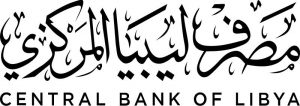Al-Siddiq Al-Kabir, the Governor of the Central Bank of Libya (CBL), has indicated that the country’s oil production must increase by at least 40% by 2022 to support sustainable development. In 2022, this figure is predicted to rise to 1.8 million barrels per day, paying Libya’s expenses and rebuilding the economy.

“As oil is almost the country’s only source of income, it is obviously essential that production rates increase in 2022. The country, which is at the top of Africa’s largest proven oil reserves, is currently pumping 1.3 million barrels a day,” he said.
The CBL works closely with the Ministry of Oil and the Libyan State Oil Company (NOC) and believes that a budget surplus can be obtained if oil prices remain constant and the NOC’s facilities are properly maintained and modernised.
As soon as oil output stabilises, the CBL expects black gold revenues to exceed $25 billion per year. This would be a huge rise over the $3.6 billion spent in 2020 when the conflict between competing administrations in the East and West forced infrastructure to close and production to plummet in Libya.
Because the country’s total domestic debt is dangerously high, currently at over 270% of GDP, Libya would avoid foreign borrowing in the near and medium-term.